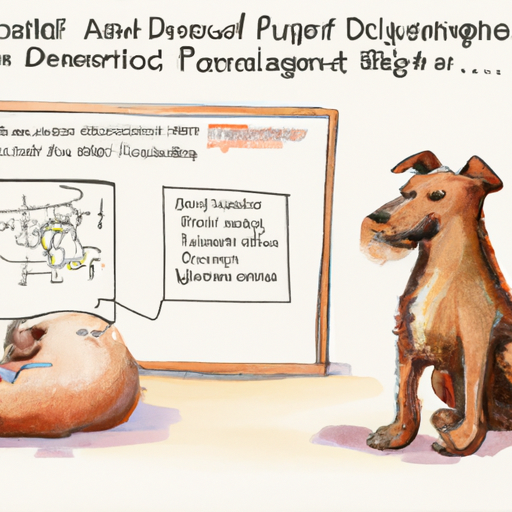As an ardent lover and caregiver of dogs, it’s critical to understand the various health issues that can affect your furry friend. One serious condition that every dog owner should be aware of is bloat. Dog bloat, or gastric dilatation-volvulus (GDV), is a serious, life-threatening condition that requires immediate medical attention. But what causes this condition, and how can you prevent it? Let’s dive into the details of why dogs get bloat and how you can protect your dog from this distressing ailment.
Table of Contents
- Understanding Dog Bloat
- Causes of Dog Bloat
- Symptoms of Dog Bloat
- Treating Bloat in Dogs
- Preventive Measures
- Frequently Asked Questions
Key Takeaways
- Dog bloat is a medical emergency that requires immediate attention.
- The exact causes of bloat are unknown, but it often occurs after a dog has eaten a large meal or engaged in vigorous exercise.
- Symptoms include a swollen abdomen, restlessness, drooling, and rapid breathing.
- Immediate treatment typically involves surgery to decompress the stomach and prevent recurrence.
- Prevention strategies include feeding smaller meals, discouraging rapid eating, and avoiding vigorous exercise after meals.
Understanding Dog Bloat
Dog bloat, scientifically known as Gastric Dilatation-Volvulus (GDV), is a rapid swelling of the dog’s stomach, which can lead to its twisting, effectively cutting off the blood supply to the stomach and other organs. This happens when air, fluid, or food gets trapped in the stomach, causing it to expand dangerously. If not treated immediately, the condition can quickly become life-threatening.
Causes of Dog Bloat
The exact cause of bloat in dogs is not fully understood. However, there are several factors that are believed to contribute to its occurrence. These include:
- Eating large meals: Dogs that eat one large meal a day are more likely to develop bloat than those that eat multiple smaller meals.
- Rapid eating: Dogs that eat their meals quickly or gulp their food are at a higher risk.
- Vigorous exercise after eating: Engaging in vigorous exercise after eating can also increase a dog’s risk of developing bloat.
- Genetics and breed predisposition: Bloat is more common in large and giant breeds, such as German Shepherds, Great Danes, and St. Bernards.
While these factors can increase the risk of bloat, it’s important to note that bloat can occur in any dog, regardless of breed or lifestyle. For a more comprehensive understanding of this condition, you can check the American Kennel Club’s detailed guide on dog bloat.
Symptoms of Dog Bloat
Being able to recognize the symptoms of bloat can make all the difference in getting your dog the help they need in time. These can include:
- A swollen or distended abdomen
- Non-productive retching or vomiting
- Rapid breathing
- Restlessness or pacing
- Drooling
- Pale or off-color gums
If you notice these symptoms in your dog, it’s crucial to get them to a vet immediately. Time is of the essence in treating bloat.
Treating Bloat in Dogs
Treatment for bloat typically involves immediate surgery to decompress the stomach and untwist it if necessary. Depending on the severity of the condition, the vet may also need to remove any dead tissue. Post-surgery, your dog will need careful monitoring and may require additional treatments to manage pain and prevent infection.
If you’re interested in learning more about pet health and wellness, OneTopDog offers a wealth of resources, including an article on common health issues in dogs and a guide to preventative care.
Preventive Measures
While you can’t entirely eliminate the risk of bloat, there are steps you can take to reduce your dog’s risk. These include:
- Feeding your dog smaller, more frequent meals
- Discouraging rapid eating by using puzzle feeders or slow-feed bowls
- Avoiding vigorous exercise or excitement for at least an hour after eating
You can also talk to your vet about the possibility of a prophylactic gastropexy, a surgical procedure that can prevent the stomach from twisting.
Frequently Asked Questions
1. Can bloat in dogs be prevented?
While there’s no guaranteed way to prevent bloat, measures like feeding smaller meals, discouraging rapid eating, and avoiding vigorous exercise after meals can reduce the risk.
2. What breeds are most at risk of bloat?
Bloat is more common in large and giant breeds, such as German Shepherds, Great Danes, and St. Bernards, but it can occur in any dog.
3. Can a dog survive bloat without treatment?
No, bloat is a medical emergency that requires immediate veterinary intervention. Without treatment, it can quickly become life-threatening.
By understanding the causes, symptoms, and treatments for bloat, you can better protect your canine companion from this serious condition. Be sure to consult with your vet if you have any concerns about your dog’s health or risk of bloat. For more information on dog health and wellness, don’t forget to check out OneTopDog.



